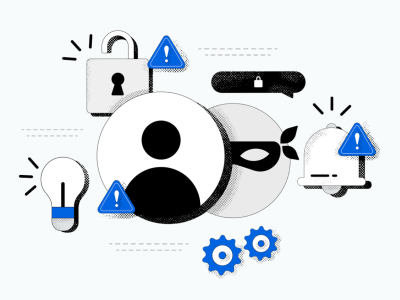
“Your device is infected!” Don’t fall for this classic scam 🛑
Cliquez ici pour lire en français
They’ve been around since the early days of the internet: sudden, alarming pop-ups claiming your device is infected. These fake virus alerts usually appear out of nowhere, warning you that malware has taken over your system. It may sound like an old-school trick, but it still works—especially on unsuspecting users. By playing on fear and urgency, these scams can push people into making panicked, risky decisions.
The scare tactics behind fake virus alerts ⚠️
The strategy is simple: create the illusion of an immediate threat to trigger panic. These pop-ups often display urgent messages like “Warning! Virus detected!” or “Your system is infected!”—paired with red warning icons and aggressive designs. Some even lock your browser or freeze your device entirely, pressuring you to call a fake tech support line or install “antivirus” software that’s actually malware.
The golden rule? Don’t take the bait. Behind the flashing warnings are scams designed to steal your personal data, trick you into downloading malicious software, or scam you with fake services.
How fear becomes a weapon 🎯
These attacks rely on social engineering—manipulating people by exploiting emotions like fear, urgency, or confusion. The goals vary, but the methods are familiar:
- Phishing forms designed to steal personal information
- Fake antivirus software that installs real malware
- Fake tech support that asks for payment for imaginary services
- Scams that extract financial or sensitive data under the guise of helping you
A fake virus warning isn’t just annoying—it can open the door to more serious threats, like spyware, ransomware, or banking data theft.
How to tell if the warning is fake 🕵️
Spotting a fake alert isn’t always easy, but these red flags are a strong clue:
- Typos or awkward grammar in the message
- Amateurish design or poorly copied logos
- Sketchy URLs (especially those lacking HTTPS encryption)
- Unusual requests, like paying immediately or giving remote access
If you see something suspicious, close the browser window right away. Then, clear your cache and cookies, and check your extensions to make sure nothing was secretly installed.
Stay calm and take control 💡
In short, panicking is the worst response to a fake virus alert. A legitimate antivirus will never ask you to call a random phone number or pay up without warning.
Stay alert for shady signs, never install anything unsolicited, and stick to trusted tools to keep your system safe. With the right habits and a bit of caution, you stay in control of your digital security—no scare tactics required.
👉🏾 Have you ever come across a fake virus alert online? What did you do? Let us know in the comments.
📱 Get our latest updates every day on WhatsApp, directly in the “Updates” tab by subscribing to our channel here ➡️ TechGriot WhatsApp Channel Link 😉






